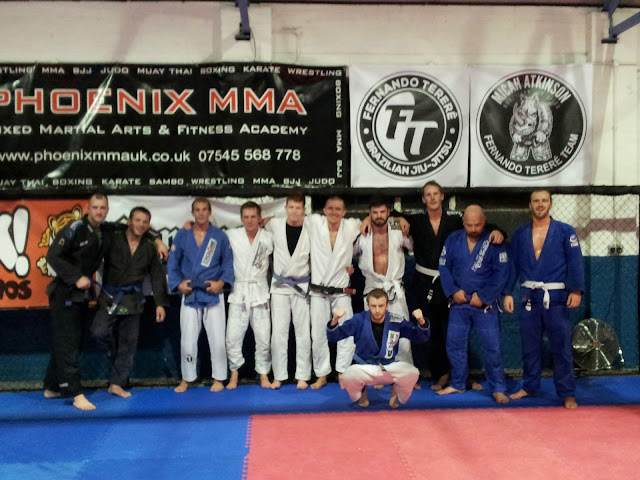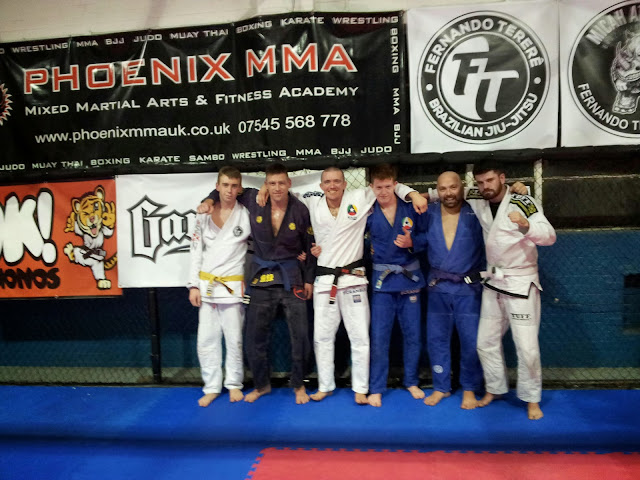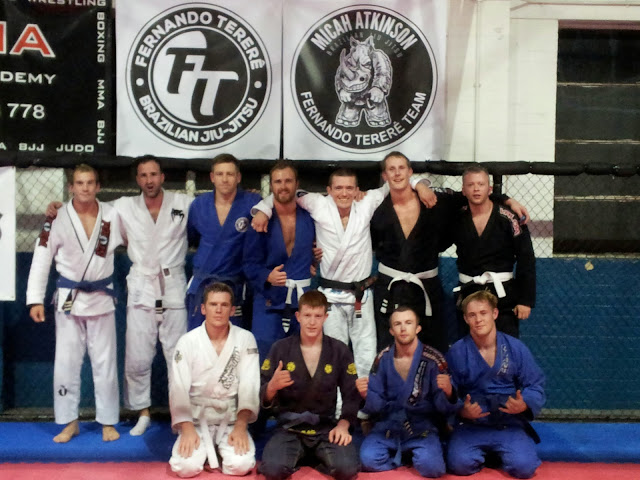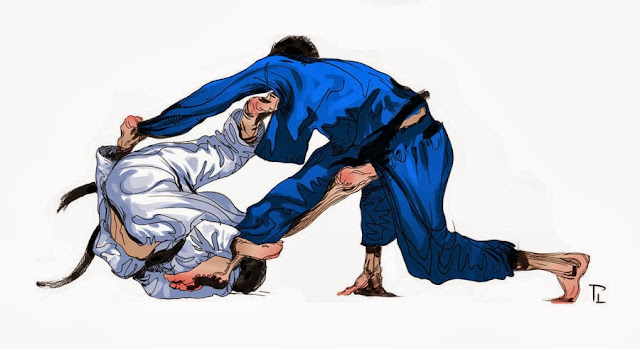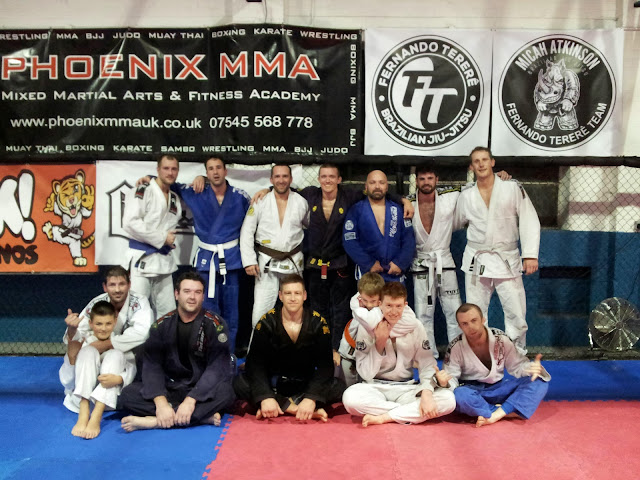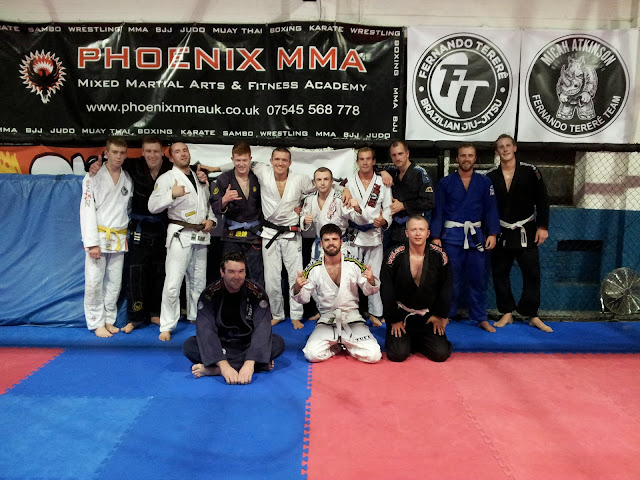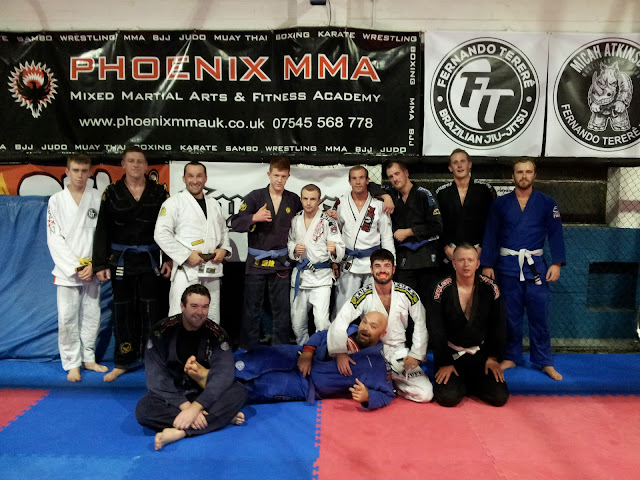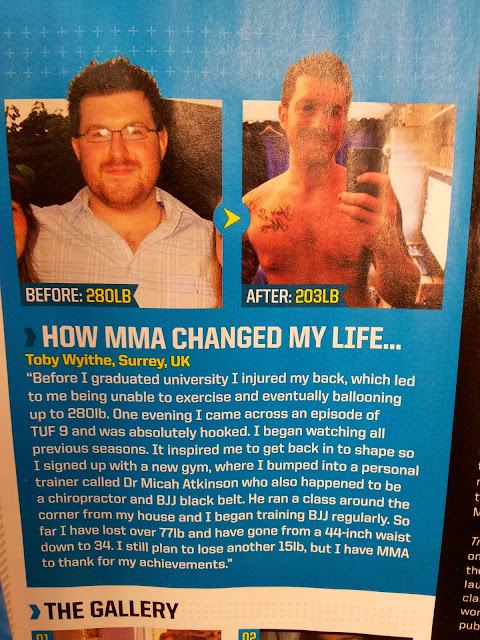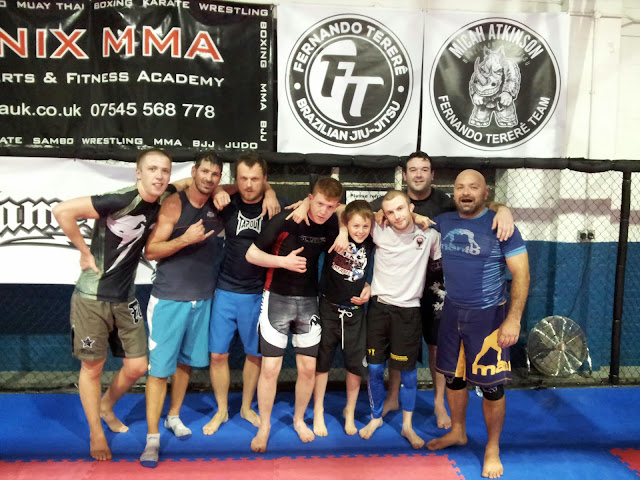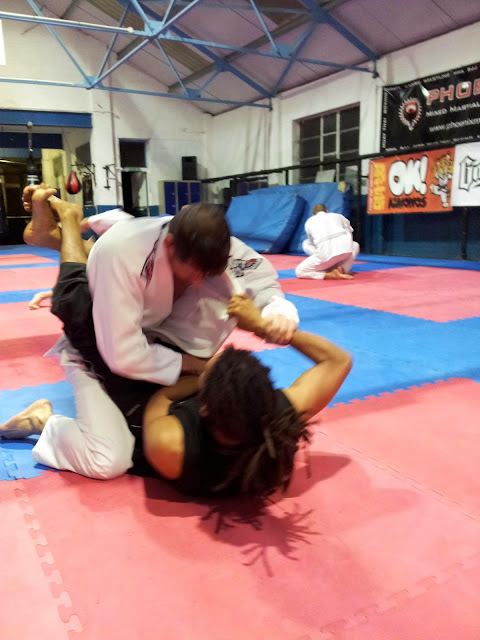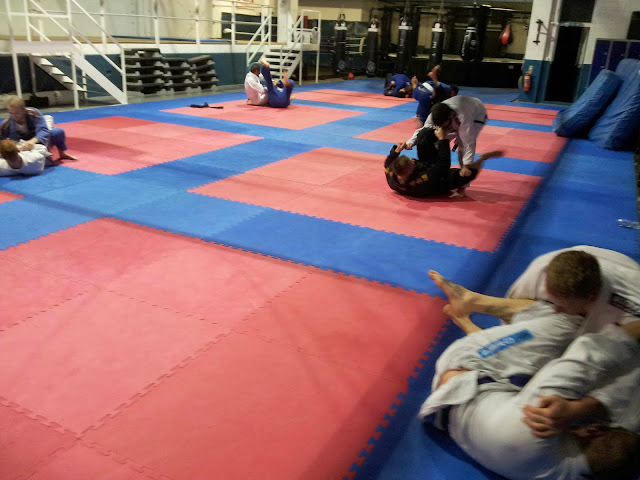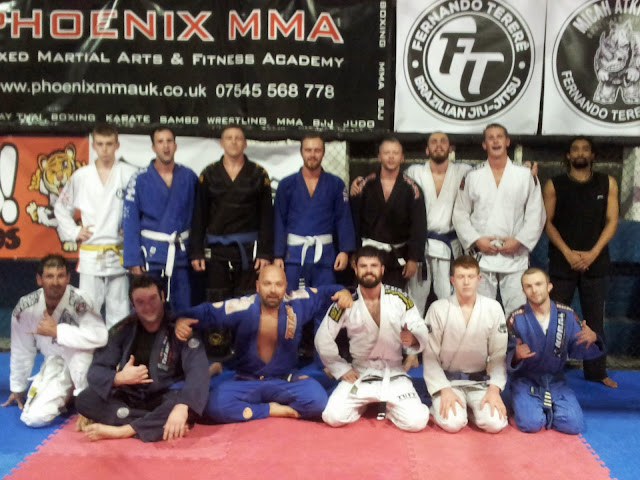Tuesday 29 October 2013
What are fundamentals..?
Monday night gi class
After warming up tonight we worked on ippon seio nage ( shoulder throw ) again both as uchikomi drills and then onto the crash mats and then straight to the mat.
Technique tonight focused on half-guard. We covered some basic concepts and then how to prevent the smash or underhook pass and then how to take the back.
Then rolled for 45 minutes.
Good work tonight from everyone!
Saturday 26 October 2013
Friday night
After warm ups we worked on our entries for our seio nage (shoulder throw) by doing uchikomi drills (turning in) we then finished the throws with sets onto the crash mats.
We reviewed passing DLR guard - cutting across and attacking the ankle lock.
We finished with a couple of 8 minute matches.
Great finish to the week.
Thanks guys for the good training.
Thursday 24 October 2013
Wednesday Gi Class
Last night we worked on passing DLR guard by attacking the free foot with an ankle lock.
We also drilled the counter to the foot lock.
We finished by rolling for 45 minutes.
Good class and everyone worked really hard.
Tuesday 22 October 2013
Monday night gi class
Tonight we worked on passing DLR guard.
After a warm up we went over the importance of trying to keep good base when in DLR and avoid being swept.
We did two basic passes against DLR-
cutting across to north/south position and getting a kimura and back step pass to reverse half guard and and pass.
We then did some positional sparring from DLR.
Finished with rolling for 45 minutes.
Sunday 20 October 2013
De La Riva Guard concepts
De La Riva guard is a form of open guard. Popularised in Jiu-jitsu by Carlson Gracie black belt Ricardo De La Riva in the 1980's.
This can be a very offensive guard that can be used to set up sweeps and submissions.
This is a very effective open guard and used a lot in high level competition.
It's a very useful guard even against bigger opponents as you can keep their weight off you while working to upset their base and sweep passing attempts whether the passer is standing or on their knee's.
KEY CONCEPTS
DLR is known for it's outside hook BUT it's important to control your opponents heel to prevent him turning his front knee out and disengaging your hook.
Focus on controlling his lead leg with your grip and hook while forcing his other leg back like trying to make him do the splits.
It's important NOT to let your opponent square up to you and remove your front leg hook. Always use your free foot to push his hip and frustrate his base.
Use your grips to control his upper body. Either double sleeve, sleeve and collar or sleeve and heel or collar and heel.
Your grips will also help prevent foot lock attempts on your free foot.
Work on controlling your opponent from here, preventing pass attempts and upsetting his base. Then pick 3 - 4 techniques and drill them without resistance before adding them to your positional sparring.
Saturday 19 October 2013
Friday night class
Friday night focused on reviewing the 3 basic DLR guard techniques we have been working on this week.
After warming up and take down practice we drilled the 3 techniques from DLR guard for 20 minutes before moving on to rolling.
I will put up a post about basic De La Riva concepts this weekend.
Next week passing DLR.
Thursday 17 October 2013
Wednesday class
Continued working on De La Riva tonight.
After a warm up we worked on gripping from standing to pulling DLR guard, then drilled the 3 techniques from Monday- overhead sweep, single leg, back take.
We then did speed drill for 2 minutes basic armbar, solo hip heist 1 minute, 2 minutes triangle and 1 minute solo triangle.
Finished rolling for 45 minutes.
Good class and everyone worked hard!
Tuesday 15 October 2013
Monday night gi class
Tonight after warming up and drilling some takedowns we worked on De La Riva guard.
We did 3 basic techniques:
Tomo nage (overhead sweep)
Sit up to single leg
Basic back take.
Finished with 45 minutes of sparring.
Saturday 12 October 2013
Hard work and perseverance
I read once that one of jiu-jitsu's greatest lessons is that it teaches that we can succeed without an ounce of natural talent.
All it takes, in almost any endeavour is hard work and perseverance.
I've been fortunate to have made some good friends through jiu - jitsu and see first hand this positive influence it can have.
A friend of mine is in this month's Train Hard Fight Easy. He kindly mentions me but in truth it takes a great deal of personal dedication and discipline to stick with training and diet changes.
Well done Toby, very proud of you.
Friday night class
Great class tonight, every one worked hard which is tough after a long week.
We worked on a double leg with the gi, then we drilled taking the back when our opponent turns in on us, then when they turn away after passing the guard.
We drilled maintaining the back and then sparred.
To finsh we did positional sparring from the back position.
Good work tonight, have a great weekend and see you next week on the mat.
Thursday 10 October 2013
Takedown Class
Thursday is takedown training. After a good warm up we practiced high single leg takedowns off of a collar tie by pulling on the opponents head to create a reaction by him posturing up and us snagging a high single. We worked on two finishes, first getting the leg high onto the hip and turning the knee out and then by dropping to a double.
We then did some solo drills: sprawling, penetration steps and wrestling sit outs.
Partner drills were basic double, elbow pop up double and then sprawling off the double to back take.
Finally couple of rounds of rolling.
Tomorrow night drilling and sparring session.
Thanks to all the guys for a good session tonight!
Wednesday 9 October 2013
Wednesday Gi Class
Good class tonight, and we were joined by Phoenix's boxing coach Mark (in a gi!) and thai boxing coach Michael on the mat.
Warmed up with double leg takedown and sprawl to back attack.
Trained taking the back from side control, off arm bar defense and then drilled maintaining back position.
Then rolled.
Tuesday no gi
Worked on taking the back from the mount, rear naked choke and then armbar from the back off choke defence.
Drilled maintaining back no gi and then rolled.
Monday 7 October 2013
Monday gi class
Good class tonight, working on controlling turtle position and taking the back.
Did basic clock choke and three variations of taking back from opponent turtled:
Putting near hook in
Rolling back take
Rodeo back take.
Smaller class but everyone worked hard.
Rickson Gracie advises on how to train and roll.
“It is important to remember that in a serious fight or in a competition, the mechanics of the fight will be exactly the same as when you are training in a gentle manner. The only important difference will be your mental attitude. When you train, you should put more emphasis on learning than on competing with your partner.”
“You don’t learn when you are fighting, bringing in all sorts of tension and emotion. You learn when you are having fun, training in a smooth and gentle way. You need to work on improving your technique until you are comfortable in any situation. Eventually, you will develop a subconscious understanding of the techniques and they become reflexes. Only after you have done all this you are ready to take your natural abilities “off the shelf” and add them back into your game. Now the effectiveness of the technique will be at least ten times better.”
source: Rickson Gracie Association Newsletter
